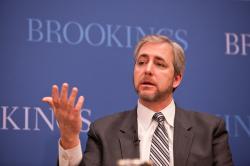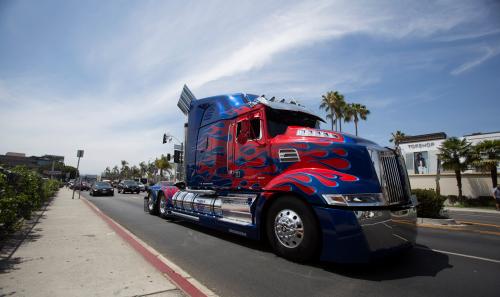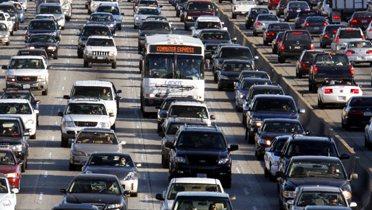View the brief and individual chapters below »
If transportation policy is going to achieve critical national objectives around economic competiveness, environmental sustainability,and social equity in an era of fiscal constraints it will require a 21st-century transportation vision.
By concentrating reforms on three major policy areas—federal leadership, empowerment of metropolitan areas, and optimization of the program—federal transportation policy can move from the anachronistic structure that exists today to something that actually works for the nation and metropolitan America.
America’s Challenge
Major metropolitan transportation challenges are driving the increasing demand for policy reform. Roads and transit systems are aging and in dire need of repair. Tens of thousands of bridges are structurally deficient. Traffic—especially in and around the nation’s metropolitan ports and freight corridors— and lack of choices to avoid these delays is pervasive. Simultaneously, environmental and energy sustainability loom large along with increasing concern about the cost of transportation-related items—such as gasoline. The result: physical neglect, congestion, and environmental degradation now seriously compromise the efficiency of a network crucial to the national interest, with a price tag of needs conservatively estimated in the hundreds of billions.
Limitations of Existing Federal Policy
While there is a pervasive desire to invest, the real challenges facing the network are far more fundamental. Absent federal leadership results in no overarching vision, goals, or guidance. Outdated policies means that federal transportation policy has only haltingly recognized metropolitan areas’ centrality to transportation outcomes, and continues to favor roads over transit and other non-motorized alternatives. And the lack of performance data and accountability means the federal grantees are underperforming and failing to maximize efficiencies.
A New Federal Approach
Transportation is a means to an end, not the end itself. The nation should settle for nothing less than evidence-based, values-driven decisionmaking. This means the development of a three-pronged strategy for our national transportation program:
- The federal government must lead in those areas where there are clear demands for national uniformity or else to match the scale or geographic reach of certain problems. The U.S. needs to define, design and embrace a new, unified, competitive vision for transportation policy—for both passenger and freight that includes its purpose, its mission, its overarching rationale.
- The federal government should empower states and metropolitan areas to grow in competitive, inclusive, and sustainable ways. Major metropolitan areas should be given more direct funding and project selection authority to enable them to embrace market mechanisms, pursue a strategy of “modality neutrality,” and develop truly integrated transportation, land use, and economic development plans.
- The federal government should optimize Washington’s own performance and that of its partners to maximize metropolitan prosperity. In order to rebuild public trust, the rationale for the federal program should be apparent to the American people and contain an explicit set of outcomes.
Table of contents for full report:
Executive Summary »
I. Introduction »
II. The Context for the Discussion »
III. Several Factors are Driving the Widespread Demand for Reform »
IV. Transportation, the U.S. Economy and the Metropolitan Priority »
V. The Policy Problem: Federal Transportation Policy in Absent, Outdated, and Underperforming »
VI. The Policy Recommendations: A Transportation Agenda for a Prosperous America »
VII. Conclusion »
Endnotes »



